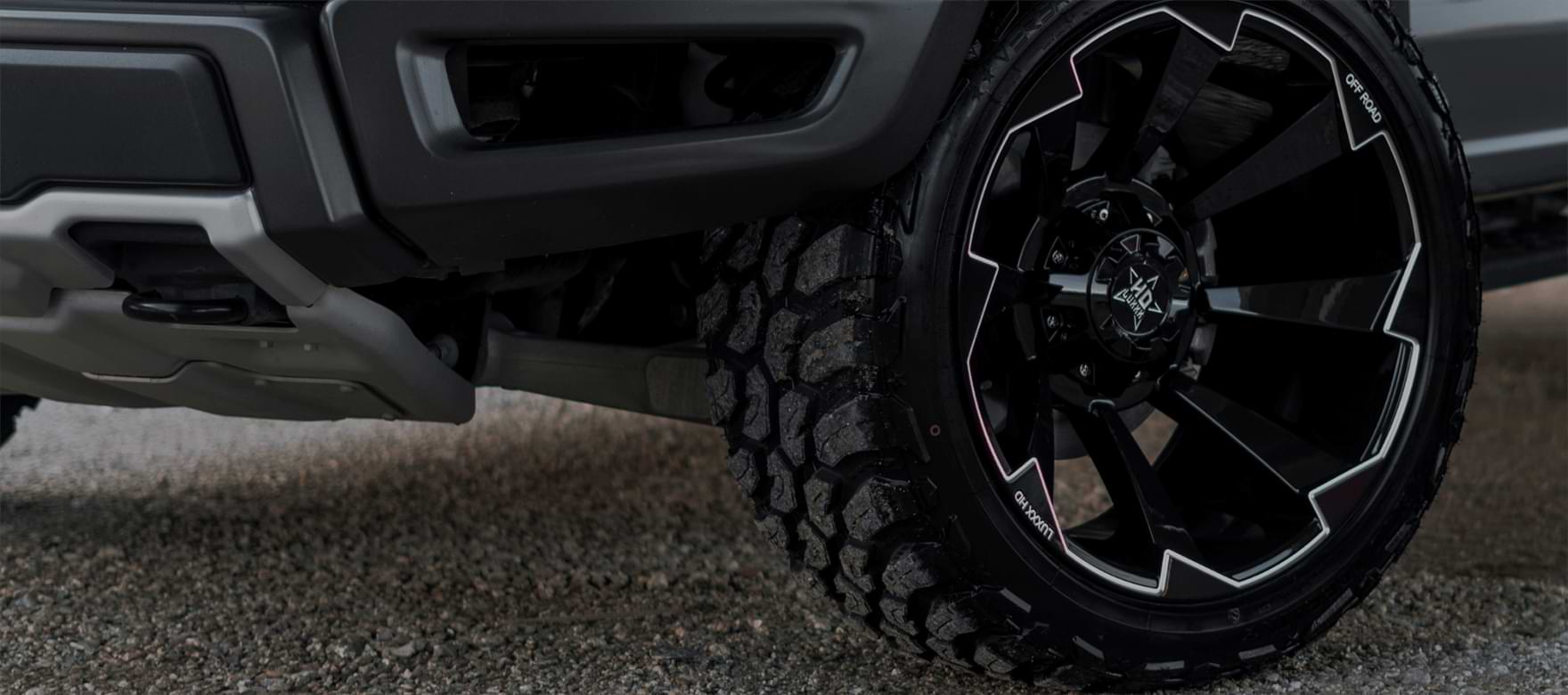
Let’s face it. Tire vibration on a road trip can be really annoying. It keeps buzzing and also raises a frustrating noise. If you have mud tires equipped for your vehicle, you might have already faced this problem.
But what causes this problem? A typical mud tire itself is sturdier and thicker than most tires. You’ll be pretty shocked to know it’s not the mud tire that actually causes vibration. Read on if you want to know what causes this vibration and how you can fix it.
No, mud tires don’t cause vibrations. Any tire at high speed can cause the vehicle to vibrate. But the issue is more often related to mud tires. This is because mud tires are bigger, and they might chip when you drive on rough terrains.
Mud tires are made to gain traction over muddy and uneven surfaces since mud tires are primarily only for off-road enthusiasts. On off-road terrains, the tires won’t cause a significant vibration because it is terrain that causes huge bumps. So vibrations are negligible.
However, if extensively used mud tires are driven on highways, they’ll give you an uncomfortable ride. The tire material will wear out if the tires are driven over highways and paved roads. Unequal wear across all 4 tires also causes significant vibrations.
If you drive over muddy terrain, the mud and debris can accumulate in the tread blocks. Sometimes, the mud in the tire makes the car shake.
Here are 4 factors that cause significant vibration in mud tires:
Tread Patterns:
Mud tires feature an aggressive tread pattern. The larger tread blocks coupled with wider void spaces help in self-cleaning. However, there’s also a downside to it. The tire material may often chip. The mud accumulated in the tire also makes the car shake.
As a result, when driving over paved roads, you’ll experience a buzzing sound and a lot of vibration. These problems aren’t present in proper highway tires because they have smaller tread blocks and continuous ribs to provide a smooth and comfortable ride.
Balancing Issues:
This problem isn’t associated with just mud tires. Any tires can cause significant vibrations if there’s a balancing issue. Tire manufacturers try their best to keep all the tires exactly similar in weight and proportion. But sometimes, perfection isn’t achieved.
That’s why a technician checks the tires of a car after installing them. If there’s an imbalance somewhere, the problem is solved by adding weights with glue in specific locations. However, when the tire is spinning several thousand miles a minute, the weight may get dislodged.
Uneven Tire Wear:
Uneven tire wear causes vibrations. If you drive a front-wheel drive or a rear-wheel drive, the front wheels and the rear wheels will perform differently. Resultantly, the tire wear will also be unequal.
The problem can be easily solved by regular tire rotation. Most professionals recommend rotating the tire every 6,000 miles for even wear across all 4 tires.
Suspension and Alignment:
Sometimes, it’s not the tire that causes the problem. Faulty suspension and alignment can also be the real culprit. Since mud tires are made bigger and heavier to prevent the vehicle from rolling over, they can also cause misalignment.
If this happens, drivers may experience symptoms such as uneven tire wear, a pulling sensation to one side, or a steering wheel that is off-center when driving straight.
Suspension plays a pivotal role in dampening oscillations. While on a vigorous off-road drive, the suspension components can be subjected to increased weight. These problems can be solved by taking your car to a technician for maintenance every now and then.
Tire Pressure:
Lastly, tire pressure can also result in vigorous vibration while at high speed. So maintaining proper pressure across all 4 tires can easily solve the issue. This also causes uneven tire wear.
Mud tires should have a lesser pressure than other conventional tires. This helps in tire life as cuts and chips are often avoided. Moreover, the tire pressure is also different if you take your vehicle off-road rather than on-road.
Do mud tires always cause vibrations?
No, mud tires themselves don’t inherently cause shaking. Any tire at high speed can lead to vehicle vibrations. However, the unique characteristics of mud tires, such as their larger size and tread patterns, can contribute to vibrations, especially when driven extensively on paved roads.
Can uneven tire wear cause vibration?
Yes, uneven tire wear causes significant vibrations when the vehicles are driven at high speeds. Rotating the tires consistently can solve this problem.
How often should I rotate my tires for even wear?
Regular tire rotation is recommended to promote even wear across all four tires. It’s advisable to rotate them every 6,000 miles or as specified by the tire manufacturer. This helps extend tire life and minimizes uneven wear.
How can I fix vibrations caused by mud tires?
Solutions include checking and correcting tire balance, rotating tires regularly, addressing uneven tire wear through rotation, ensuring proper suspension and alignment, and maintaining recommended tire pressure. Consulting a professional technician is advisable.
In a nutshell, mud tires don’t inherently cause vibrations. Since they are used extensively over rough terrains, several problems like alignment and suspension issues, balancing issues, and uneven wear may arise.
These issues will cause vibration in any type of tire. It’s recommended to give proper maintenance to your tires to remove vibration.
References:
1: Pacejka, H. B. (1980). Tyre factors and front wheel vibrations. International journal of vehicle design, 1(2), 97-119. Available Form:
https://www.inderscienceonline.com/doi/epdf/10.1504/IJVD.1980.061355
2: Tandy, D. F., Bae, J., Colborn, J., & Coleman, C. (2016). An analysis of recreational off-road vehicle tire performance characteristics. SAE International Journal of Passenger Cars-Mechanical Systems, 9(2016-01-1635), 839-860. Available form:
https://www.sae.org/publications/technical-papers/content/2016-01-1635/
3: Craighead, I. A. (1997). Sensing tyre pressure, damper condition and wheel balance from vibration measurements. Proceedings of the Institution of Mechanical Engineers, Part D: Journal of Automobile Engineering, 211(4), 257-265. Available Form:
https://journals.sagepub.com/doi/abs/10.1243/0954407971526416